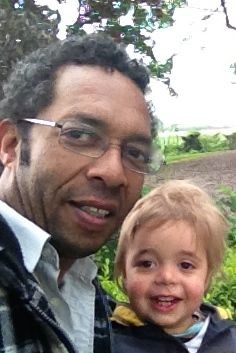Dutch Centre for Intangible Cultural Heritage
Since the incorporation of the The Dutch Centre for Intangible Cultural Heritage in the Dutch Open Air Museum, intangible heritage is a vibrant part of the museum. With the Crafts Laboratory we inaugurated a platform for craftspeople to experiment with their craft, a Lab where craftspeople exchange ideas with artist and designers to innovate the crafts. What makes the experiment interesting is the context, a museum and its collection consisting out of buildings and artefacts representing the history of daily life in the Netherlands. Together with a trained museum staff, craftsmen and women (boatbuilders, millers, blacksmiths, papermakers, wheel makers), who succeed in preserving craft skills in a museum setting provides an interesting comparison with the CraftLab. As we can combine the museum task with an effort to make a contribution to innovating contemporary crafts, to establish a link between the past, the present and the future.
CraftLab (AmbachtenLab)
Description of the project / practice / program
The CraftLab was established in 2018. It intends to contribute to safeguarding of the crafts by furnishing an experimental platform for craftspeople in which they can experiment with artists designers and (craft)student to innovate their craft. The idea is to explore the possibilities of the craft. The aim is not a flashy new (crafted) product but an inquiry to the possibilities of the craft and the various techniques in the world of today.
By bringing him/her into contact with different points of view at the same time, the craftperson is provoked to leave his or hers comfort zone of the craft, he or she is lured into a new field of possibilities. One day a week, for a period of 8 weeks this thinktank works together. During this period their joint process is filmed en photographed. At the end of this working period a public show is scheduled in the museum. The show contains the film, the photos and the models they have been working on. The show is ment to be ‘unfinished’. The participants won’t show high-end models or products. They will show ways of thinking and possibilities to collaborate because the CraftLab is meant to be the starting point for discussion. Visitors are invited to walk along, to consider the possibilities of the path the Lab participants just opened up for them.
How were practitioners of intangible cultural heritage involved?
The CraftLab is established for the support of crafts. It’s a method that brings different fields and professions together to explore new ways considering the contemporary social issues like sustainability, ‘honest’ production facilities, manufactured in a local setting with a cultural connotation. Starting point, following the UNESCO convention 2003, is the knowledge of the craftspeople, their techniques and skills are considered a cultural treasure. In each CraftLab is at least one craftsperson the main character, his or hers information and skill transition is the point of departure for each Lab. A designer, a (craft)student and artist are invited to work along with the craftsperson in order to start a joint working period from 8 weeks. In which they can explore any possibility of the craft they want to. During this period their joint process is filmed en photographed.
CV of the author

Originally Frank Hemeltjen started out as an artist, his main focus was on art in public space. In the nineties he was committed to an artist space where he was working as a curator for five years, next to having his own practise as an artist. After that he started as small office for advice on art in public space. And he was commissioned in large scale (urban development and landscape restructuring) projects as well in smaller community art projects for a range of cities in the Netherlands. Since March 2018 Hemeltjen is working for the Dutch Centre for Intangible Heritage. He was invited by the Dutch Centre for Intangible Heritage to develop and introduce a new type of safeguarding for intangible heritage. In cooperation with craftspeople, he assembles artists, designers and students around a specific craft. The Dutch Centre for Intangible Heritage is a department of the Dutch Open Air Museum (NL) in Arnhem.
LESSONS LEARNT
- The CraftLab is a methodical process. At this point we can extract these recommendations from the first four CraftLabs we have run. The collaborations between the craftspeople, artists, students and designers proofed to be a positive addition to the policy of the museum.
- Curators (from other museums), the Lab participants and visitors of the final shows gave us pretty good critics. The participants I asked about their personal process within the Labs dropped terms and remarks like new awareness and their sense of renewal of the crafts, and that they were even more interested in the museum collection and its history, then when they started out.
- For us as museum, the Labs gave us the possibility to show the process of renewal and innovation of the crafts on social media, in films and photos. And we got in touch with a new group: students, artists and designers who found out that it is rewarding to browse our collection, which, as they found out, can be seen as a fountain of inspiration.
Practical
When
25 February 2019 from 14:30 to 14:30
Where
Subscriptions
It is no longer possible to subscribe to this bestpractice. Reports and videos will be published after the bestpractice.